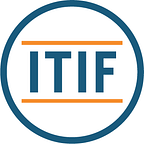Colombian Knockout Monitor Prevents Anesthesia from Wearing Off During Surgery
This post is one of a series in the #Innovate4Health policy research initiative. #Innovate4Health is a joint research project by the University of Akron IP Center (UAIP), the Information Technology & Innovation Foundation (ITIF), and the Geneva Network. This project highlights how intellectual-property-driven innovation can address global health challenges. If you have questions, comments, or a suggestion for a story we should highlight, we’d love to hear from you. Please contact UAIP Research Fellow Douglas Park at dpark@uakron.edu for more information.
Douglas Park
Waking up in the middle of surgery is usually the stuff of horror stories, but it does occasionally happen in real life. Awareness during anesthesia, known as “intraoperative awareness,” happens to roughly 1 or 2 of every 1000 patients. Fortunately, researchers at Universidad de La Sabana have developed Knockout Monitor, an AI-assisted monitoring system that makes general anesthesia a more consistent and reliable process.
Intraoperative awareness is a worldwide public health problem. The effects of intraoperative awareness can be devastating, even beyond the pain experienced during surgery. Immediate psychological effects may include anxiety and feelings of helplessness, paralysis, and impending death. Patients may also develop persistent symptoms such as nightmares, anxiety, depression, and PTSD. Avoidance of medical care is another common side effect, exacerbating any future conditions a patient may suffer.
Ensuring that a patient remains properly anesthetized for the duration of surgery is a complex task. Anesthesiologists manage both the proper dosage of sedatives, often applied repeatedly throughout surgery, and continuously monitor the patient’s vitals. These specialists are highly trained and competent professionals, but each patient has unique needs to prevent intraoperative awareness.
Each case requires “a careful preoperative evaluation” of factors including age, sex, ASA Physical Status Classification, and drug tolerance. The American Society of Anesthesiologists (ASA) Practice Advisory Task Force also recommends reviewing the patient’s medical records, conducting a careful physical examination, and even patient or family interviews to help identify patients who may be susceptible to intraoperative awareness. Despite all these efforts, diagnostic tools are imperfect and too many patients still awake on the operating table.
Dr. Daniel Botero Rosas decided to reduce the odds of patients awakening from anesthesia by developing a better diagnostic tool. He had observed that doctors must all too often diagnose anesthetic depth entirely “according to knowledge and experience,” so he set out to develop a better tool. Dr. Botero works in the Universidad de La Sabana’s department of morphophysiology, and he teamed up with his university colleague Oscar Leonardo Mosquera, engineer and doctor of biosciences. Together, they developed the Knockout Monitor system.
Botero and Mosquera’s system combines innovative digital signal processing techniques and a custom-built AI platform to classify a patient’s anesthesiologic depth in real time. The invention permits doctors to maintain sedation levels safely and reliably. Knockout Monitor merges several steps of diagnosis into a single process, including gathering biological signals, monitoring neurological activity, processing and measuring those signals, and finally collating all of that data into usable diagnoses.
Universidad de La Sabana lauds the Knockout Monitor system for making patient monitoring more efficient by limiting the necessary amount of human interaction to ensure patient safety. As opposed to the conventional practice of constantly monitoring muscle movement, ocular reflexes, respiratory and perspiratory patterns, ECG, blood pressure, heart rate, and more, the Knockout Monitor system processes all diagnostic data simultaneously and more quickly than a human can, allowing anesthesiologists to manage patient sedation more efficiently and effectively.
Mosquera says that this project “aims to strengthen the knowledge-based economy,” a sector where Colombia shows promise. As in countries throughout the world, Colombia has skilled and knowledgeable researchers such as Botero and Mosquera working in universities and other research institutions. Transforming their ideas into applications that can help patients requires technology transfer, the process through which research labs move their innovations into the private sector where they can be further developed. The development of Knockout Monitor is a prime example of the benefits of technology transfer.
Intellectual property rights are crucial to ensure the success of tech innovations such as Knockout Monitor. Researchers such as Dr. Botero and Mosquera usually do not have the resources to turn their innovations into applied technology. The development process for life sciences technology is a long, expensive gamble that often requires skills and knowledge regarding regulatory compliance and testing outside the experience of research labs.
Fortunately, startups, spinoffs, and established companies have the resources and know-how to turn an idea into reality, given assurances that their investment can produce returns. With IP protections afforded by patent law, these inventors have the security necessary to form partnerships with investors, providing an opportunity to benefit from successful development to inventors, investors, and patients alike.
The Knockout Monitor system is moving into the clinical trials and testing stage through the work of Unisabana Hub, the university’s dedicated knowledge transfer unit. Unisabana Hub has taken advantage of the Patent Cooperation Treaty (PCT) to secure patents in several countries, including both the US and Colombia.
With those patent protections, Knockout Monitor is substantially more likely to secure the funding necessary to conduct clinical trials with Clinica Universidad de La Sabana and Hospital Universitario de La Samaritana. Once the system has passed clinical trials, Dr. Botero and Mosquera can spin off a business firm from the university to handle marketing and distribution, in keeping with the transfer strategy prescribed by the university’s Office of Transfer of Research Results (OTRI).
The two innovators plan to share their invention outside of Colombia with other nations, including the US and Brazil. With the benefits of the PCT international patent system and the collaborative processes of tech transfer, Knockout Monitor may soon enter the international market and bring both peace of mind and less traumatic medical procedures to patients around the world.
